This puzzle centers on an invented writing system where time (ie. movement) is a critical feature. We are given a series of looping animations, some of which share their color with a phrase in the flavor text. Assuming the colored animations encode their respective phrases, we look for patterns and try to determine the rules of the writing system. We translate some of the other numbered examples, confirming our understanding and building our knowledge of the writing system as we go. A full example solve path is below, but here are a few high-level insights to make about the writing system (which we call "Timescript"):
- It encodes the sounds used to say a phrase, rather the letters used to spell it
- Each continguous moving part is a single syllable, and they are ordered by the period of their animation (fastest to slowest)
- Each symbol on a moving part represents a consonant sound, while the movement direction/type indicates its vowel sound
Here is the full definition of Timescript.
As we translate the example phrases, we notice that they are all time-related idioms, sorted alphabetically.
| # | Annotated Sounds | Idiom |
|---|---|---|
| (title) | 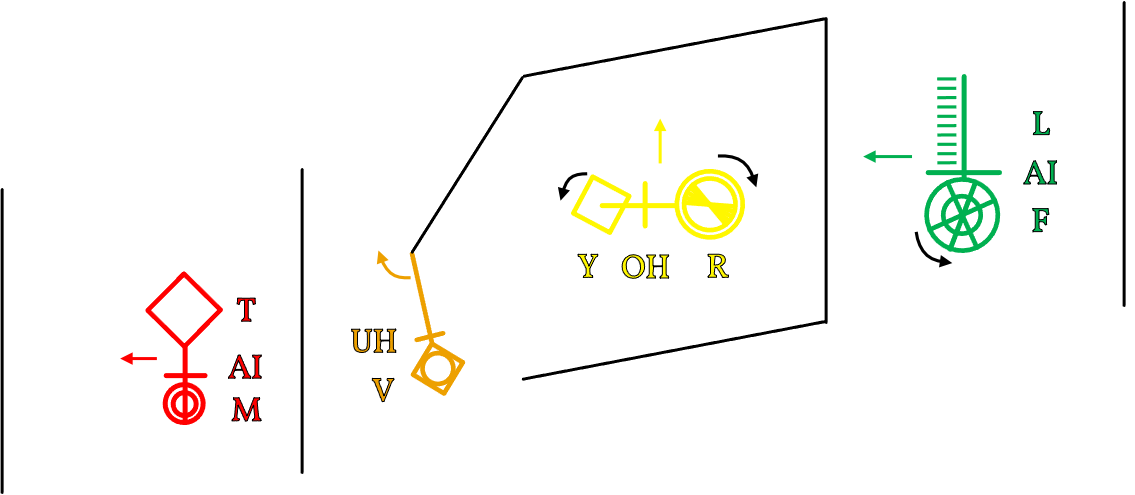 | TIME OF YOUR LIFE (given) |
| I | 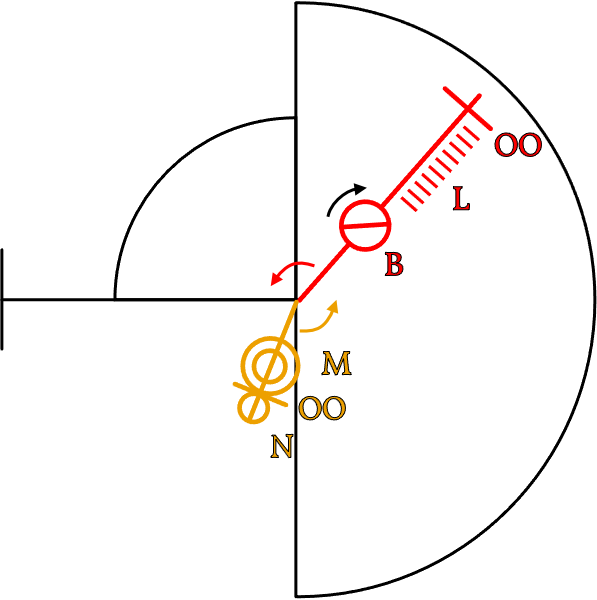 | BLUE MOON |
| II | 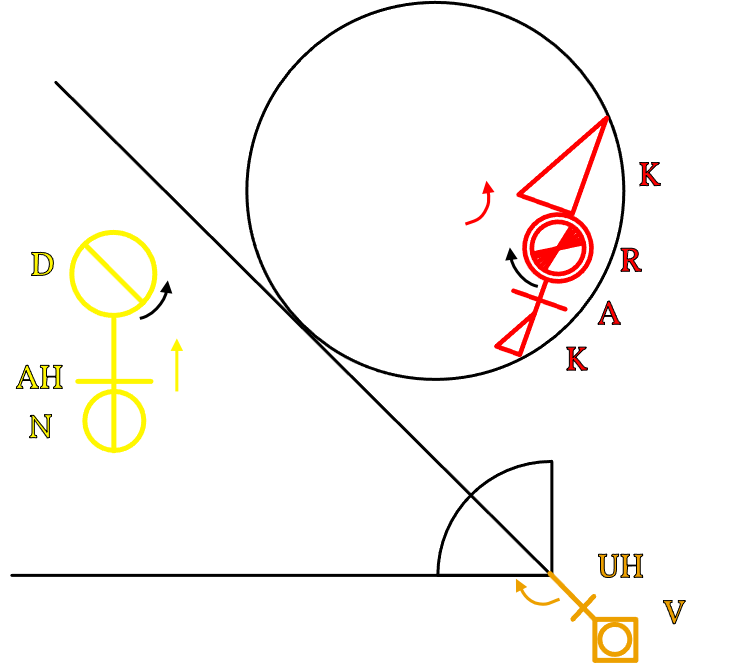 | CRACK OF DAWN |
| III | 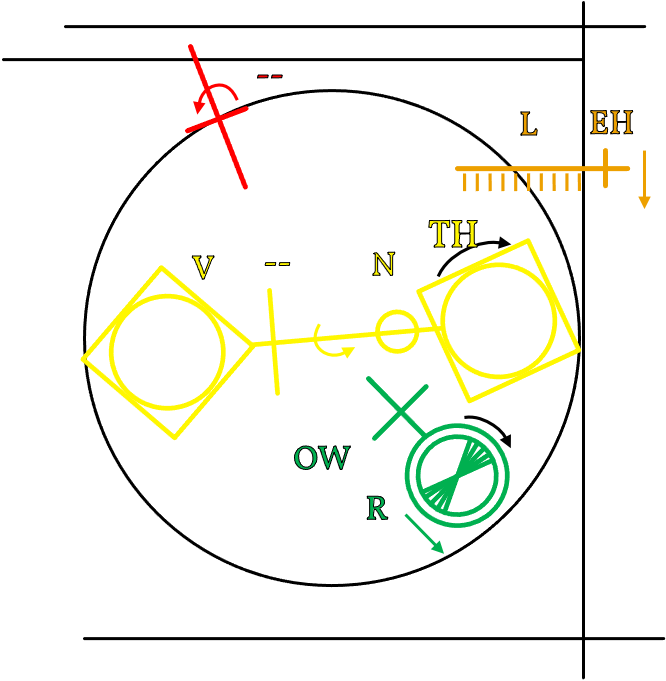 | ELEVENTH HOUR |
| IV | 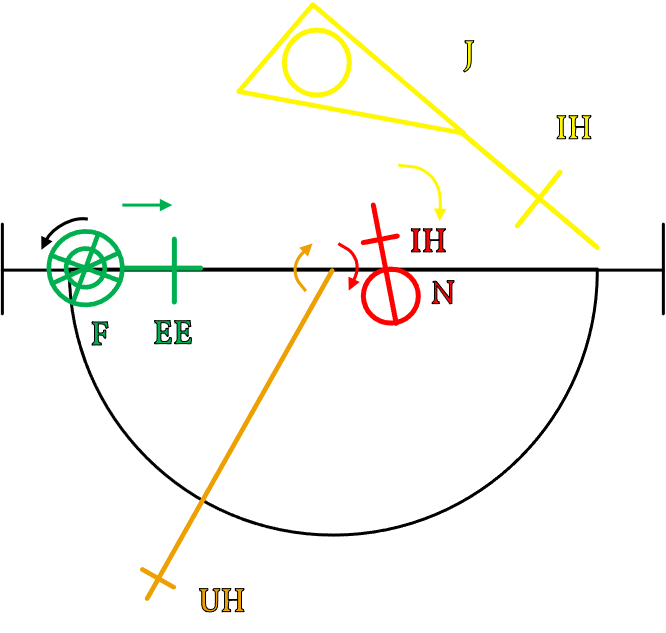 | IN A JIFFY |
| V | 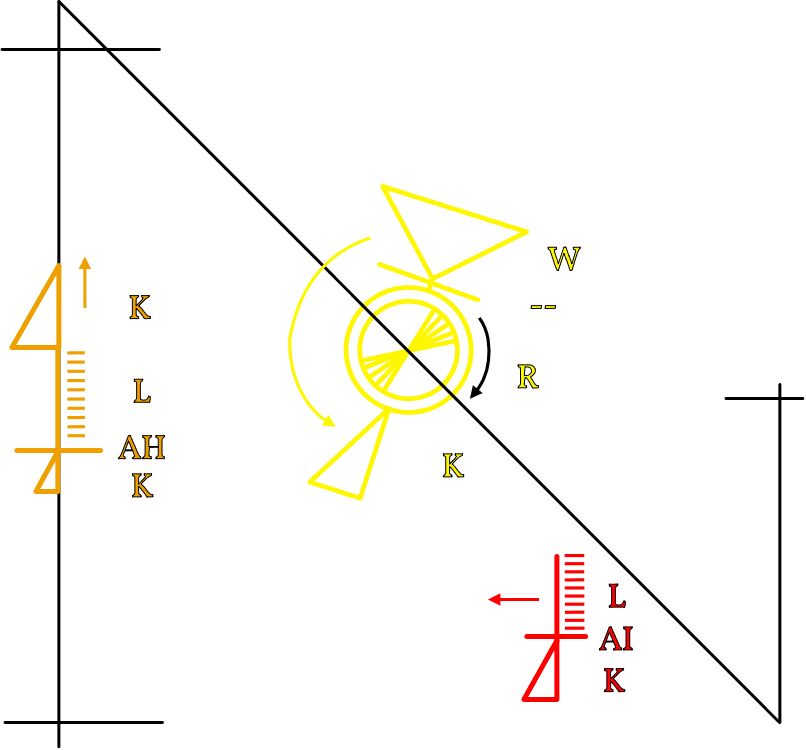 | LIKE CLOCKWORK |
| VI | 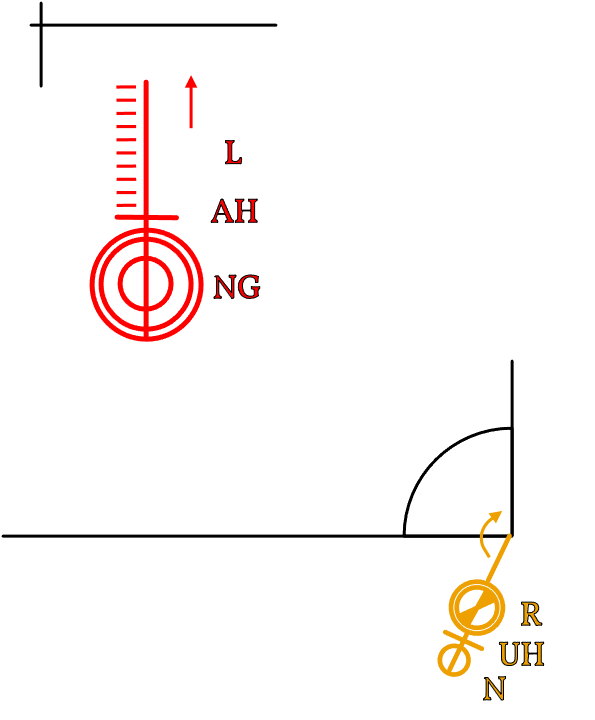 | LONG RUN |
| VII | 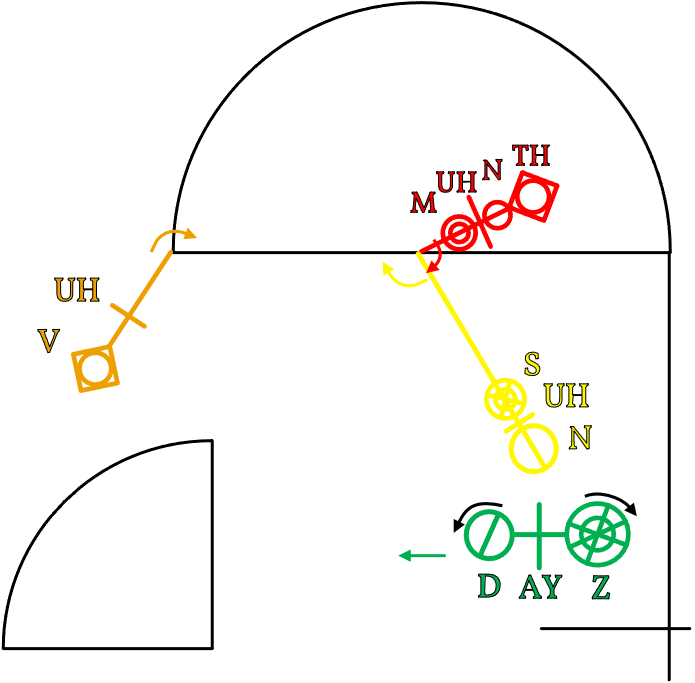 | MONTH OF SUNDAYS |
| VIII | 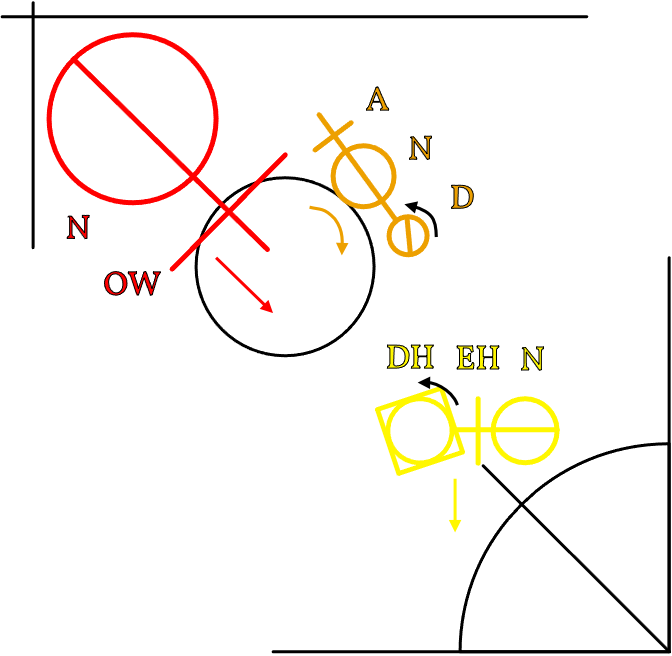 | NOW AND THEN |
| IX | 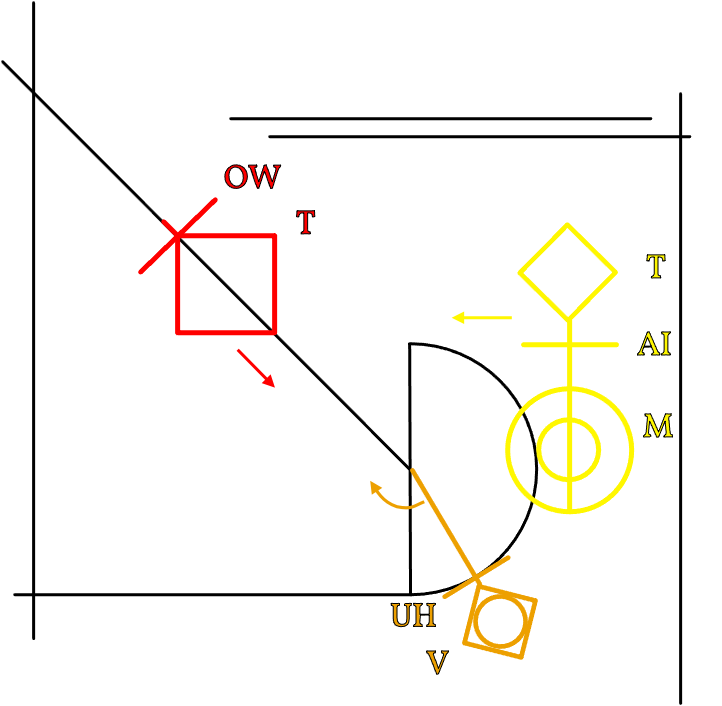 | OUT OF TIME |
| X | 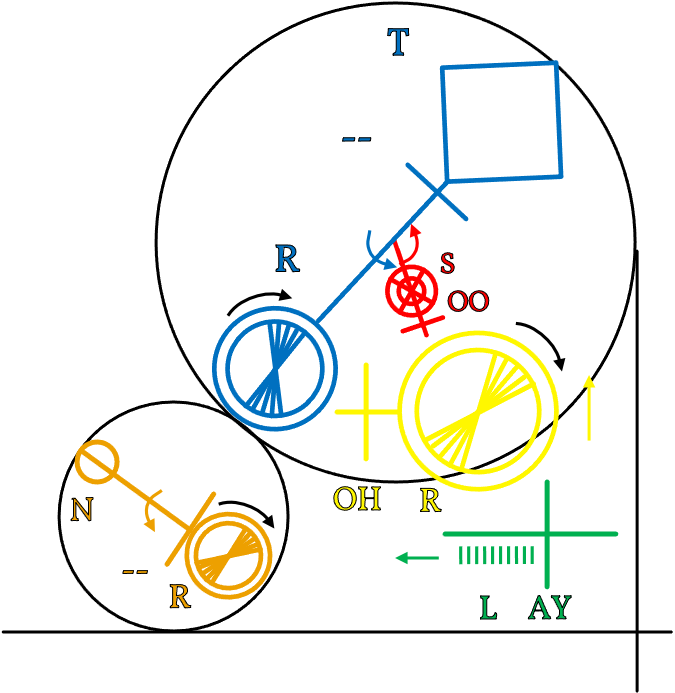 | SOONER OR LATER (given) |
| XI | 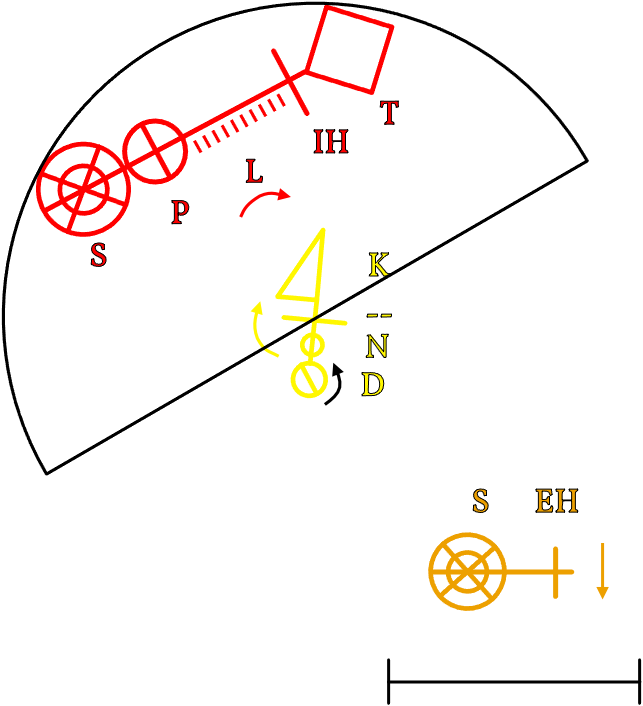 | SPLIT SECOND |
| XII | 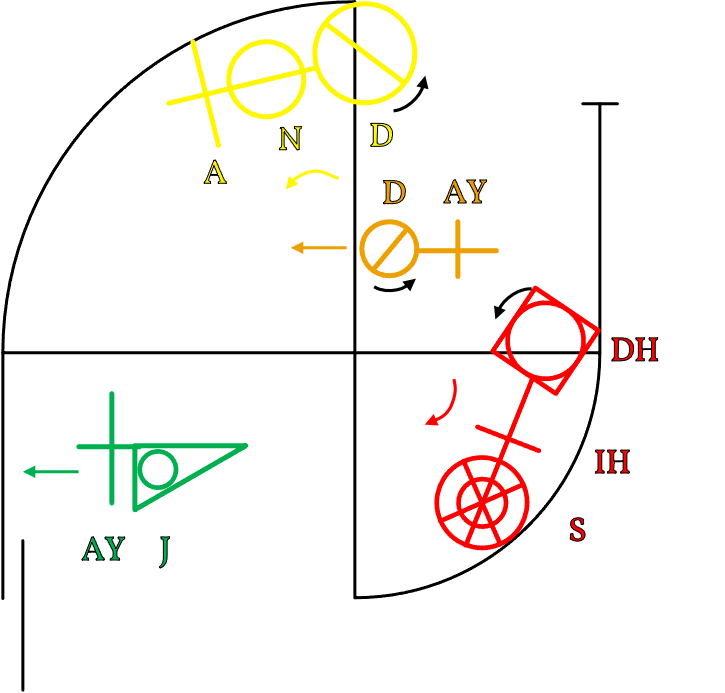 | THIS DAY AND AGE |
| XIII | 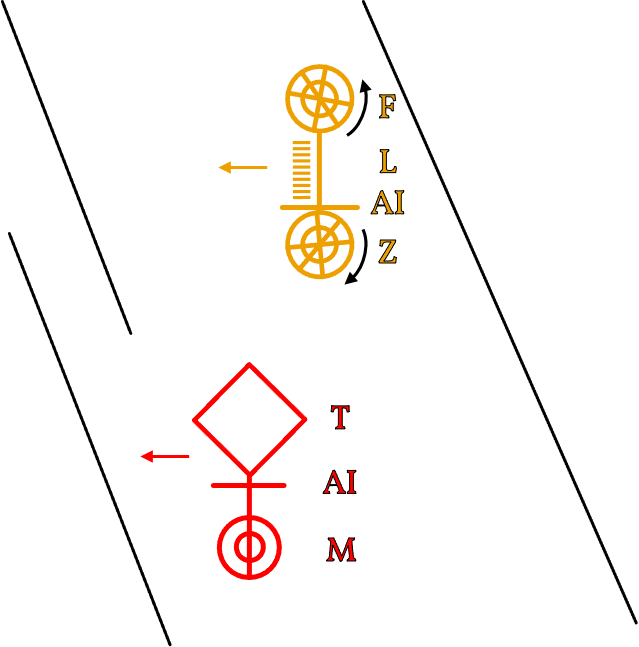 | TIME FLIES |
| XIV | 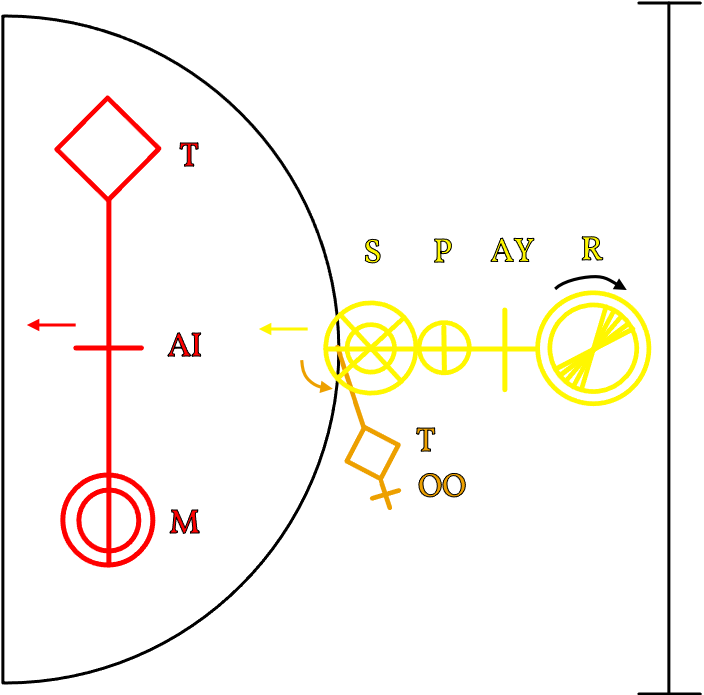 | TIME TO SPARE (given) |
| XV | 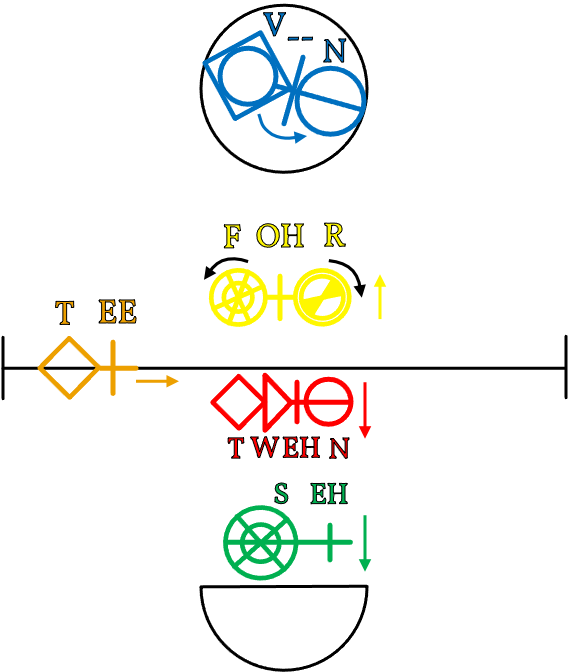 | TWENTY-FOUR SEVEN |
After we've learned enough about the writing system, we can translate the animation at the bottom of the page.
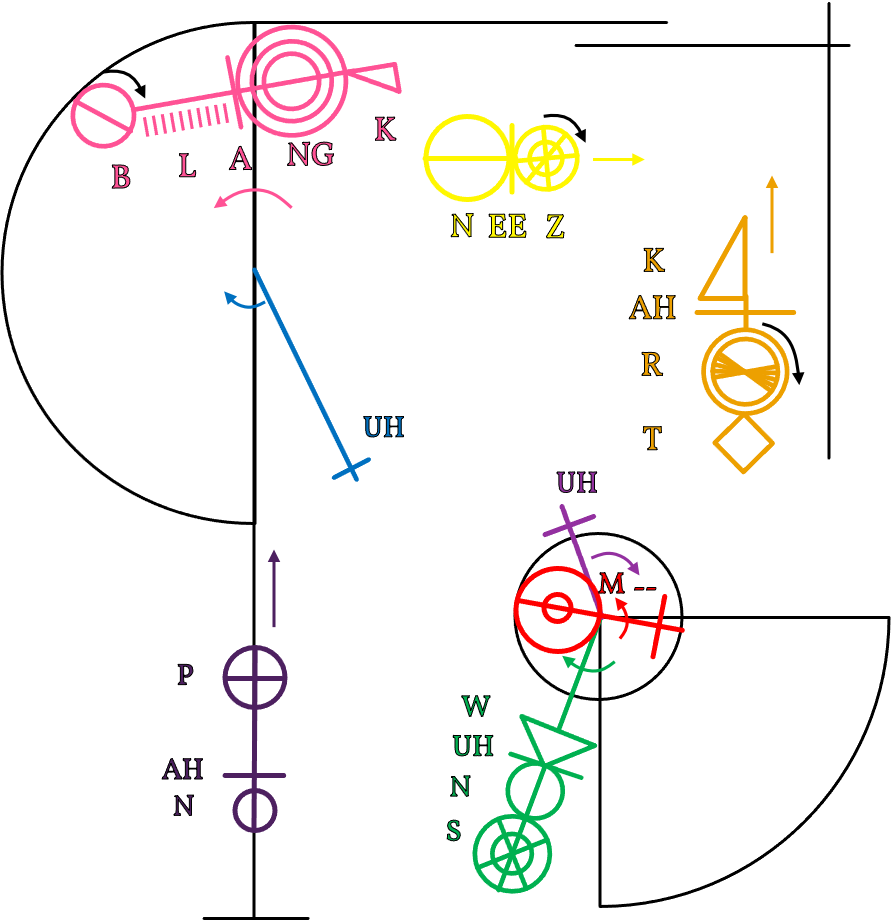
It says MCCARTNEYS ONCE UPON A BLANK, referencing Paul McCartney's song "Once Upon a Long Ago."
The answer is LONG AGO.
Author's Notes
This puzzle was inspired by my favorite fictional writing systems like Sherman's Gallifreyan and First Ones' Writing. I love that they are more than just simple ciphers for the latin alphabet. I also love how words written in these scripts turn into beautiful pictures where there is room for the calligrapher to take some creative freedom. I wanted to design a script with these properties. Once I got a time-related answer I decided to make an animated script, so time would need to pass in order to read it (and frankly because I thought it would be cool). As I wrote the puzzle I tried to work in nods to some of my favorite time-themed media. This includes Story of Your Life by Ted Chiang (a lovely story about time and also language; it informed the puzzle's title) and the anime Steins;Gate (a story about time travel; its title sequence inspired Timescript's appearance).
Since the structure of the puzzle (a series of "training" examples followed by a final clue phrase) was pretty straight-forward, the solving experience was mostly shaped by the writing system's design. For example, the choice to encode sounds rather than letters was partially to stop people from using tools like Nutrimatic to skip most of the work. I also didn't want this to be a research puzzle where people had to look up and understand IPA charts, so I didn't make the writing system be based on features like rounded/unrounded or voiced/unvoiced. I wanted solvers to make and test guesses about the script, fumbling through incomplete phrases until they realized what the idiom should be. This is also why I avoid IPA notation in this solution.
Some other design principles I set: a still screenshot of an animated encoding should be impossible to completely translate (for example, many consonant symbols are distinguished by whether they move clockwise, counterclockwise, or neither). However, a moment of animation should theoretically be enough to distinguish eveything (for example, "oscillating left and right" and "moving constantly left" were not allowed to both be possible). Finally, some features of the animations should not be used for translation. This last principle was important to me because when I was learning Gallifreyan and First Ones, I really enjoyed spotting patterns to tease out which features were meaningful and which were apparently arbitrary. I also wanted calligraphers to be able to adjust their animations to convey things like emphasis, semantic clues, and personal flair. Think of it as formatting and punctuation. The original version of this puzzle had a lot more variation in consonant style and background design. The definition of Timescript still supports this, but I standardized a lot of things in the puzzle itself for the sake of solvability.
Vowel sounds proved particularly difficult to encode. For one thing, the "right" vowel for a given word varies a lot between individuals. But even if I used one objective standard, there are just too many vowel sounds to give them all distinct movement types—solvers wouldn't be able to recognize and confirm sounds if every slightly different mouth position had a totally new encoding. The fact that consonants (especially R) affect nearby vowel sounds makes it all that much worse. My imperfect solution to this was to define a set of vowel "categories" that might contain multiple sounds. When sorting sounds into categories, I tried to do what was most consistent and least likely to cause solver confusion, but I'm sorry if some of them were not what you would have chosen. If you're ever writing in Timescript, use whatever vowel feels right to you!
Writing this puzzle was an absolute delight. I hope you enjoyed it, and I hope this is not my last opportunity to use Timescript.
Appendix 1: Timescript Definition
Timescript uses animated shapes to encode the sounds (not letters) of a phrase. All phonetic information will be conveyed through elements that are moving, and these must remain visible at all times. Stationary shapes can provide locations to "teleport" sliding items, serve as reference points for measuring the speed of something, or simply be decorative.
Syllables
Each moving part (that is, each set of shapes moving together as if they were attached to the same rigid line) represents a single syllable. Every shape that appears in the syllable represents a sound (see below), read in standard reading order (left-to-right, top-to-bottom). For syllables with rotational movement, apply this "reading order" when they are at their right-most position. Within-syllable reading order is also demonstrated in the vowel table below. Syllables are ordered by the relative speed of their movement: specifically, from shortest period to longest period.
Vowels
Each syllable gets one vowel sound (diphthongs are considered unique vowel sounds). The position of the vowel is marked by a short line intersecting the primary "stem" at ninety degress. The vowel sound is specified by the nature of the syllable's movement, including both movement direction and relative orientation (for example, a spinning syllable that is parallel to its radius of rotation would have a different vowel sound than one perpendicular to the radius).
Since there are many vowel sounds, some of which are affected by their neighbouring consonants and most of which are used differently depending on dialect, Timescript currently has fourteen broad vowel categories. We recommend using the closest match to your pronunciation. Sometimes there will be multiple correct encodings.
The table below illustrates all of the currently defined vowel sounds. They are all presented following the K sound to demonstrate reading order.
| OH go, home, four | AY day, same, care | |||
| EH set, end, bell | EE week, fear, seem | |||
| AH odd, dawn, start (optionally move down for caught rather than cot) | AI time, kite, fire | |||
| OO soon, tool, moor | OW how, fowl, sour | |||
| UH run, love, up | OY toy, boil, point | |||
| -- (schwa and such) seven, work, middle | A and, sat, rally | |||
| U full, book, good | IH sit, him, fill |
* If all consonants have rotational symmetry, you'll have to try both possible reading directions.
Consonants
Consonants are each represented by a unique symbol (two similar shapes with different rotation are considered distinct symbols). Consonants appear in order within their syllable, along with one line to mark the position of the vowel sound. They may not overlap and do not affect each other. Many details related to consonants are flexible, like their size, rotation speed, reflection over the syllable's center line, and whether or not that line bisects them (though for this puzzle we bisected or not consistently within each consonant).
The table below illustrates all currently defined consonant sounds. They are presented as if part of a vertically oriented syllable and without any line bisecting them.
| P as in pig | B as in bat | D as in dog | |||||
| N as in nose | M as in mouth | NG as in lung | |||||
| T as in tear | G as in gear | Y as in year | |||||
| S as in soon | Z as in zoom | F as in far | |||||
| V as in vain | TH as in thin | DH as in the | |||||
| SH as in shoe | R as in red | ZH as in vision | |||||
| K as in kick | J as in jump | W as in walk | |||||
| L as in low | H as in high | CH as in check |
Appendix 2: Sample Solve Path
We are given a set of looping animations featuring simple geometric shapes. One of these is in the location and style of the puzzle title, so it might represent the phrase "Time of Your Life." Two more animations are colored to match portions of the flavor text. We suspect that the animations encode their corresponding phrases, which is supported by "Time of Your Life" and "Time to Spare" having a very similar moving part in common (likely the word "time").
We can try to map shapes and movements to letters, but it doesn't work very well. For example, in the title, none of "of," "your," and "life" have anything in common, when the letters O and F appear twice between them. With all of our observations (plus the phrase "listen closely" in the flavor text) we propose that the writing system might be encoding sounds rather than letters. If we pursue this idea, we'll see that it works well and we can make some further insights about the writing system.
By considering the frequency of the sounds in our given phrases, or just testing possibilities, we can get a pretty good idea of which shapes represent a few of the consonants (like T and R). It also looks like each contiguous moving part represents a single syllable (which explains why "Sooner or Later" has five moving parts). Everything lines up if we assume each consonant is represented by a single shape. But then where the vowel sounds should go, there's always just a single line crossing through the primary "stem."
From here, we could potentially figure out a few more high-level properties of the script. For example, if we look at the syllables we think we know, we see that the ones with the same vowel sound are all moving the same way (eg "time" and "life," "to" and "soon"). So we guess that the way a syllable is moving encodes its vowel sound. We can also notice that the earlier syllables in each phrase seem to be moving faster, and realize that syllables are ordered by the relative periods of their movement (from fastest to slowest).
However, even if we don't see all of those things yet, we can turn our attention to the other animations. Some of them have a lot of features we've already seen. We'll start with the ones that have the most familiar symbols and try to translate them. We can probably get a few:
| Example | Sounds Confirmed | Sounds Introduced |
|---|---|---|
| IX. OUT OF TIME | T, UH, V, AI, M | OW |
| XIII. TIME FLIES | T, AI, M, F, L | Z |
| I. BLUE MOON | L, OO, M, N | B |
Now we have a pretty solid confirmation of our initial theories. Ideally we also have discovered syllable ordering or vowel distinction, if not both. We also see that the phrases are all time-related idioms, sorted alphabetically. That will help us identify the rest. There are many potential paths through the remaining examples, but here is one we might take:
| Example | Sounds Confirmed | Sounds Introduced |
|---|---|---|
| III. ELEVENTH HOUR | --, L, V, N, OW, R | EH, TH |
| VII. MONTH OF SUNDAYS | M, UH, N, TH, V, S, N, AY, Z | D |
| XI. SPLIT SECOND | S, P, L, T, EH, --, N, D | IH, K |
| II. CRACK OF DAWN | K, R, UH, V, D, N | A, AH |
| V. LIKE CLOCKWORK | L, AI, K, AH, --, R | W |
| VI. LONG RUN | L, AH, R, UH, N | NG |
| XV. TWENTY-FOUR SEVEN | T, W, EH, N, F, OH, R, S, V, --, N | EE |
At this point, we've seen all the sounds that appear in the final clue phrase. But let's solve the last few examples to confirm our understanding.
| Example | Sounds Confirmed | Sounds Introduced |
|---|---|---|
| IV. IN A JIFFY | IH, N, UH, F, EE | J |
| VIII. NOW AND THEN | N, OW, A, D, EH, N | DH |
| XII. THIS DAY AND AGE | DH, IH, S, D, AY, A, N, J |
Now that our training is complete, we can translate the final animation to get the phrase MCCARTNEYS ONCE UPON A BLANK. We find Paul McCartney's song "Once Upon a Long Ago" and have our answer, another time idiom: LONG AGO.